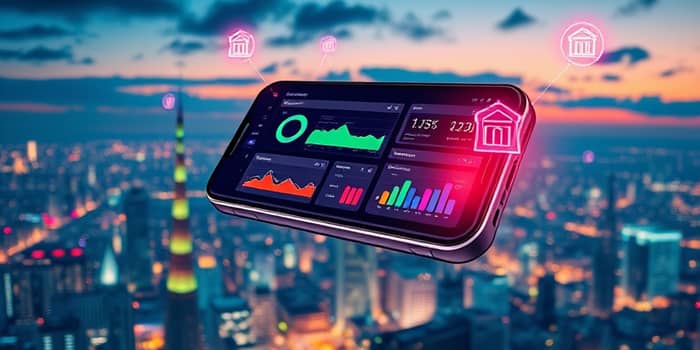
The banking sector is undergoing a seismic shift as digital platforms redefine how we manage, spend, and save our money. With innovations emerging at a breakneck pace, consumers and institutions alike must adapt to a landscape that prioritizes convenience, speed, and security.
As of 2025, digital banking is no longer a futuristic concept but an integral part of daily financial life. From AI-driven analytics to mobile wallets, the ways we interact with money have been transformed by technology and changing consumer expectations.
Digital banking encompasses a suite of financial services delivered electronically rather than through physical branches. It includes traditional banks’ online portals, neobanks operating exclusively through apps, and hybrid platforms leveraging cloud infrastructure.
Historically, the journey began with simple online statements and internet transfers. Today, advanced features such as biometric login, real-time spending alerts, and voice-driven assistants illustrate the breadth of capabilities available at a tap or voice command.
The scale of digital banking’s expansion is staggering. According to industry analysts, the global digital banking market was valued at approximately USD 9,800 billion in 2024. A projected compound annual growth rate of 8.7% could propel it to USD 17,414 billion by 2032, underscoring its economic significance.
The surge in FinTech R&D has also driven up service costs and infrastructure investments. For instance, the Consumer Price Index for digital banking-related services climbed 4.7% between 2023 and 2024, while the Producer Price Index for fintech infrastructure rose 4.4% in the same period.
In 2025, an estimated 77% of consumers prefer managing bank accounts via mobile apps or computers. Millennials lead adoption at 80%, while 72% of Gen Z favor digital channels over in-person visits.
Despite widespread enthusiasm, some barriers remain. Approximately 45% of those without online banking accounts still favor traditional branches, and 42% cite security concerns as their chief hesitation.
Modern digital banking platforms boast a diverse array of features that cater to evolving consumer needs. AI-powered budgeting tools and fraud detection capabilities enhance security and financial awareness.
Cloud adoption enables banks to scale rapidly and personalize experiences. From predictive analytics offering spending insights to open banking frameworks fostering third-party integrations, the technology suite is vast and growing.
As digital banking flourishes, security remains paramount. Digital platforms face sophisticated cyber threats, requiring robust encryption, multi-factor authentication, and constant monitoring.
The digital divide poses significant barriers for certain demographics and regions. Low digital literacy, limited internet infrastructure, and distrust of online services slow adoption in some communities.
Established banks are investing heavily to compete with neobanks and fintech firms. Many legacy institutions now offer mobile-first products and streamlined digital onboarding to retain market share.
However, younger, digitally native challengers often outpace traditional banks in agility and user-centric design. Physical branches still serve critical functions for high-value transactions, advisory services, and populations who value face-to-face interaction.
Open banking regulations continue to expand globally, compelling banks to share customer-permissioned data with third-party providers. This fosters innovation in personalized financial products and seamless integrations.
Meanwhile, rapid advances in AI and cloud technologies, coupled with potential CBDC rollouts, promise to redefine monetary policy and cross-border payments. Regulators and institutions must collaborate to ensure safety and interoperability.
As digital banking evolves, consumers should adopt proactive measures: secure strong passwords, enable biometric authentication, and diversify between platforms to minimize risk.
Financial institutions, for their part, must invest in compliance, cybersecurity, and operational resilience. Prioritizing user experience through intuitive design and accessible interfaces will be key to retaining and growing customer bases.
Digital banking is more than a technological trend—it represents a fundamental shift in the relationship between individuals and their finances. By understanding the market dynamics, adopting innovative tools, and addressing security and access challenges, both consumers and institutions can thrive in this dynamic environment.
Embracing the future of money means navigating change with foresight, resilience, and a commitment to inclusive, user-centric solutions. As the digital horizon continues to expand, those who adapt swiftly and responsibly will shape the next era of banking.
References













